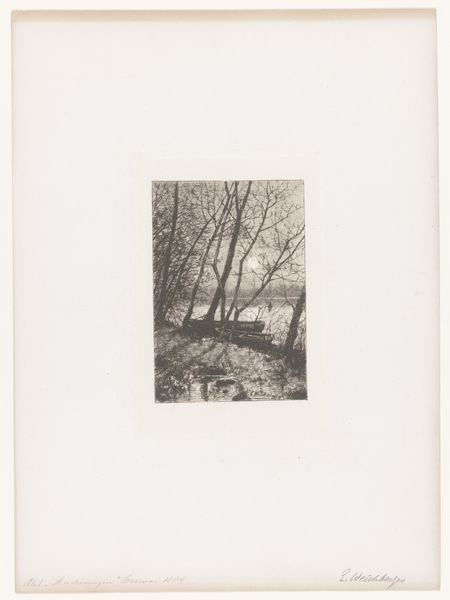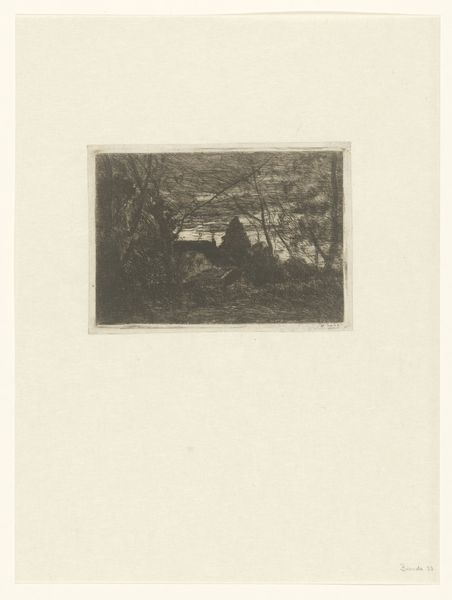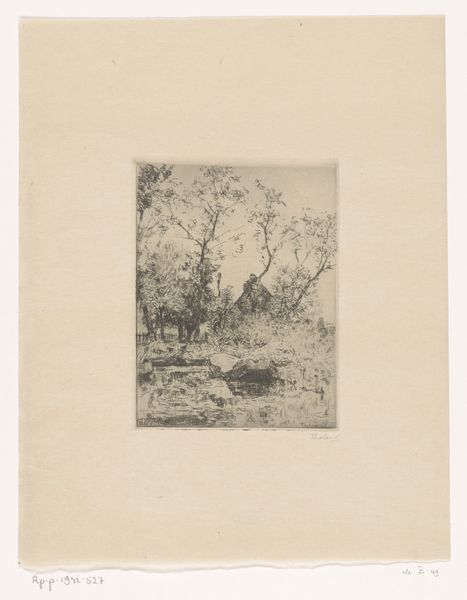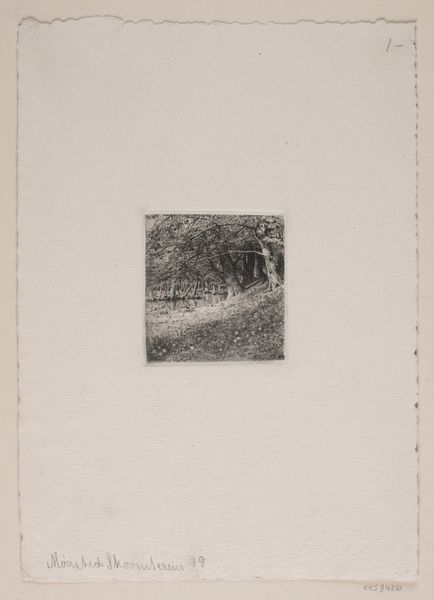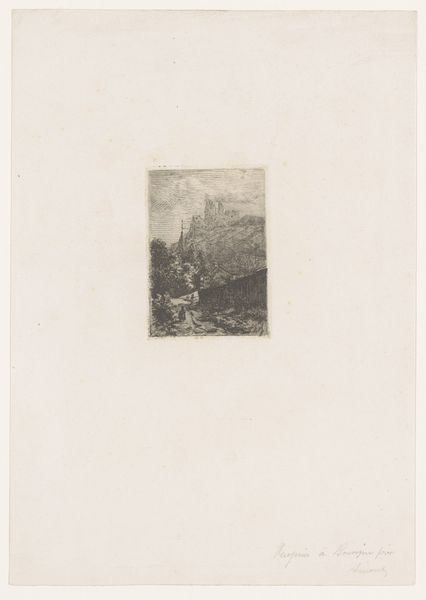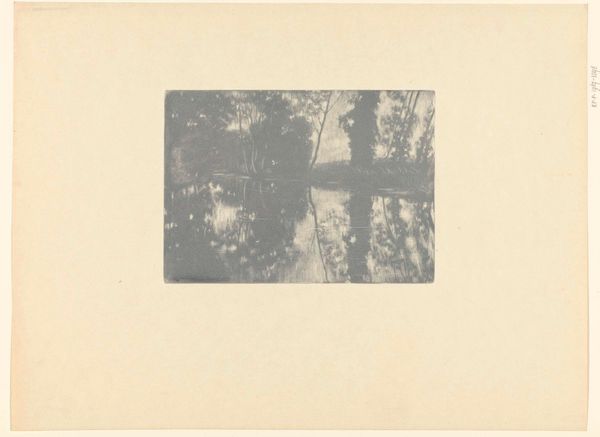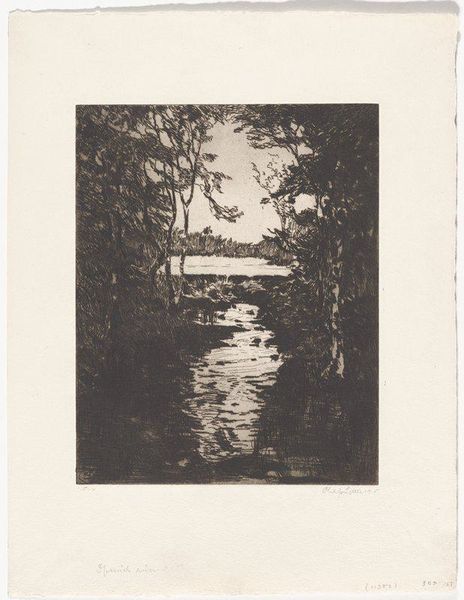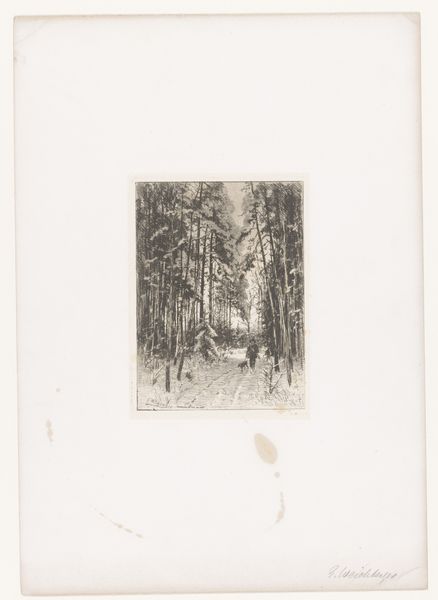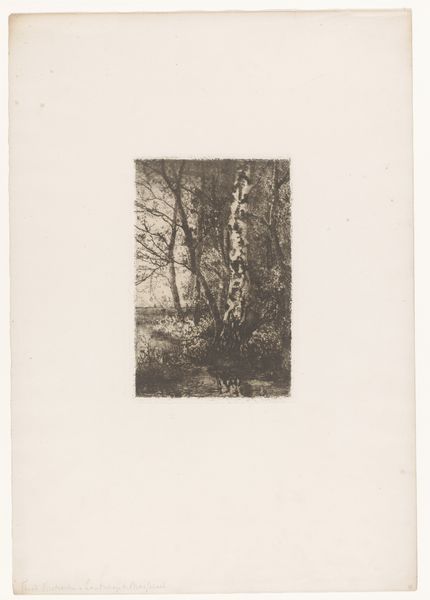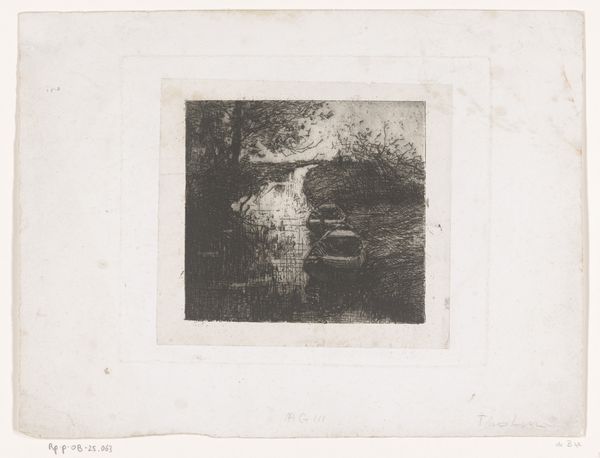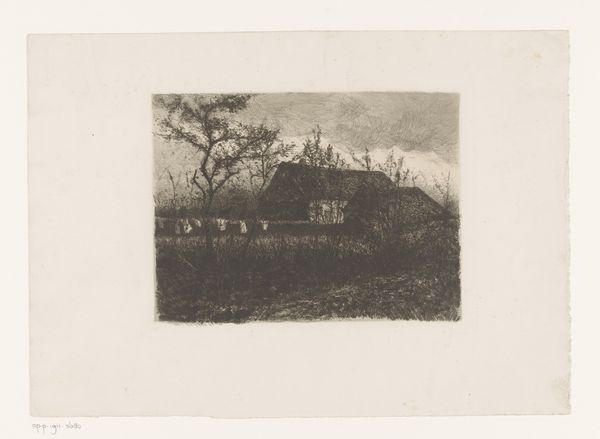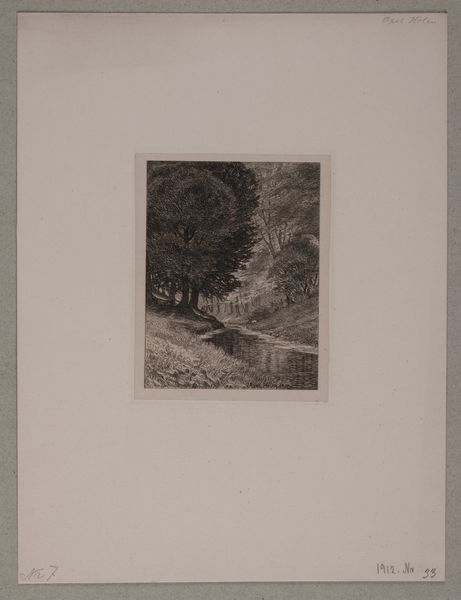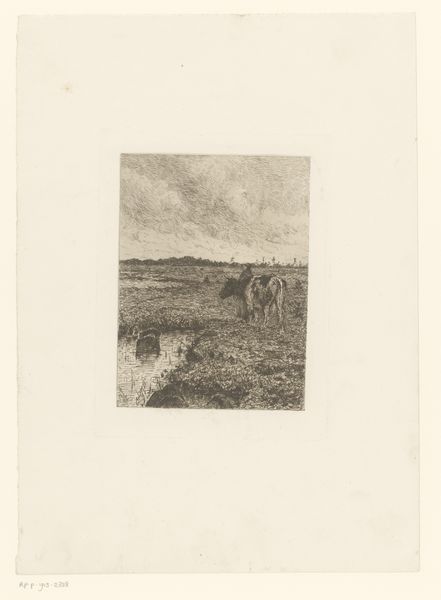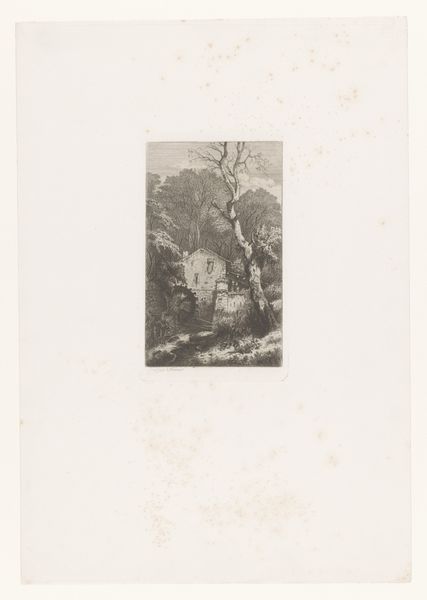
Dimensions: 11 7/8 x 9 7/8 in. (30.16 x 25.08 cm) (plate)15 7/16 x 13 3/4 in. (39.21 x 34.93 cm) (sheet)
Copyright: No Copyright - United States
Curator: Let's turn our attention now to Philip Little’s etching from 1915, "After the Storm." Editor: It's quite moody, isn't it? All those heavy, dark tones. The etching technique really lends itself to capturing that feeling of stillness and subdued power after a storm has passed. Curator: Absolutely. Little was working within a strong tradition of American landscape printmaking, often used to promote an idealized vision of nature and the nation’s potential. Think about the market for prints like this – they brought art into the homes of middle-class Americans. Editor: The materiality is interesting. It's an etching, which means laboriously scratching into a metal plate to create the image. This process speaks to the amount of time and work needed to bring an artistic idea into material form. Do we know where Little produced his prints? Was he working with specialized craftspeople or did he have his own studio? That’s what shapes our understanding. Curator: The context of its production would certainly enrich our reading. Regardless, "After the Storm," while echoing those broader nationalist sentiments in landscape art, feels quite introspective. The lack of human presence… Editor: It almost feels desolate, wouldn’t you say? Look at the way the water is rendered—the etched lines suggesting a residue of rough texture, evidence of nature's forces. And how much ink remained on the plate to leave those darker passages behind? It makes me wonder if the artist embraced a specific material approach with unique chemical solutions or timed submersion in the acid, impacting how the scene evokes feelings of drama and solemnity. Curator: Little captures something very atmospheric in its shadows. By understanding the artwork and how this was distributed and received in its time allows for an enhanced dialogue. The viewer can actively examine a narrative of nature. Editor: I appreciate that nuanced understanding so much, examining the societal imprint on these nature forms and, simultaneously, feeling the etching’s physical connection to our own experience.
Comments
No comments
Be the first to comment and join the conversation on the ultimate creative platform.
